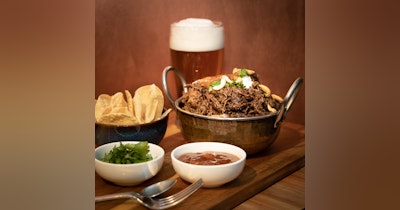A huge thanks to Adrian, from Ages Fire Kitchen who generously supplied this recipe for gluten free pizza dough. Adrian is a home cook pizza making guru!
Working with Gluten Free Flour is quite a different dough experience, as it has a completely different feel and texture to what we are used to, with a traditional dough. The thing that most people will struggle with is the stickiness of it all. It doesn’t feel like dough at all… It feels more like a paste.
So the mixing process of a Gluten Free dough is more about correctly combining the ingredients, and not developing strength, like traditional kneading (as there is no gluten to develop).
Like always, nothing beats good quality flour. In this case, Caputo “Fioreglut” is my flour of choice. I have used this with family and friends who suffer from gluten intolerances and some who are also celiac. They were convinced I was feeding them real dough, so I must be doing something right. Be aware Caputo “Fioreglut” is expensive (3-4 times the price of normal Caputo Flour), but you get what you pay for.
As a rule of thumb, each dough ball contains approximately 166 grams of flour, so you can use your bakers percentages to scale up the recipe (depending on how many balls you need to make).
| Bakers Percentage | 1 Ball @ 300 grams | 6 Balls @ 300 grams | |
| Gluten Free Flour | 100% | 166 grams | 1000 grams |
| Water | 80% | 133 grams | 800 grams |
| Salt | 2.5% | 4.15 grams | 25 grams |
| Fresh Yeast (Active Dry) | 0.8% (0.4%) | 1.3 grams (0.65 grams) | 8 grams (4 grams) |
| Extra Virgin Olive Oil | 2% | 3.3 grams | 20 grams |
- Add all of the water to your mixing bowl
- Melt the yeast in the water.
- Slowly add a little gluten free flour and begin to mix. Wait for the flour to be absorbed and keep mixing to ensure any clumps of gluten free flour are dissolved before you add more.
- Get in the habit of adding the gluten free flour little by little, only adding more once all clumps are dissolved.
- Once you have added about half the gluten free flour, add the salt and continue mixing.
- Continue to add the remaining gluten free flour (little by little)
- Keep mixing until there are no more clumps of gluten free flour in your dough.
- As mentioned earlier, you will notice the dough feels and looks more like a paste than a dough. This is normal.
- We are ready to turn the dough out of the bowl onto a kneading surface… But before you do this, oil your bench, hands and tools to avoid the gluten free dough from sticking. This is where most people get caught. Oil is now your best friend.
- Now you can add the Extra Virgin Olive Oil to the dough
- Since this dough is gluten free you can’t do stretch and folds as there is no gluten holding this “paste like dough” together. So fold the dough on itself until the oil is absorbed.
- We are now ready to prepare the dough balls. As mentioned the key here is to keep everything well oiled. Hands, Spatulas, Scale, Bench Top etc
- Portion and weigh the dough balls into 300 gram balls. Make sure the outside of the ball is completely covered with a light coating of oil.
- Place onto the centre of a section of cling wrap (slightly larger than an A4 sheet of paper) and gently flatten it into a disc until it is approx. 1-2 inch thick (this is to help the stretching process later on).
- Then loosely wrap the disc in the cling wrap.
- We individually wrap each dough ball/disc to eliminate contamination.
- Place in a cool place for 8-9 hours at approx. 18 degrees Celsius.
When the time comes to stretch the dough ball out, be careful and take your time. There is no gluten, so the dough is extremely delicate. The dough could potentially rip in half as there is nothing holding it together. The cooking process is what binds and solidifies the pizza.
- Flour your bench using gluten free flour or rice flour.
- Slowly begin to stretch your dough, pressing from the centre out.
- Using a scraper or spatula with some dusting flour, slide the scraper underneath the disc on all sides to ensure it is not sticking to the bench. Using the scraper will force the dusting flour underneath the disc and will help to stop it from sticking
- Now with one hand continue to flatten the disc, and use your other hand to maintain the curve of the disc (pushing the dough into your hand maintaining the curve).
- This will help to stop the edges from splitting. If it splits, that’s fine… it’s a paste, you can pinch it back together again.
- Run your scraper around the edges, checking for any sticking. Add more dusting flour if needed.
- Continue to stretch.
- Run your scraper around the edges, checking for any sticking. Add more dusting flour if needed.
- Apply your toppings (less is more, especially with gluten free). Too many topping could cause the dough to tare.
- Run your scraper around the edges for a final time, but this time you are trying to remove excess flour from underneath.
- Gently slide the disc onto the peel.
- If you have a perforated peel, give it a little shake to remove any excess flour from the bottom of the pizza
- Slide it into the oven.







